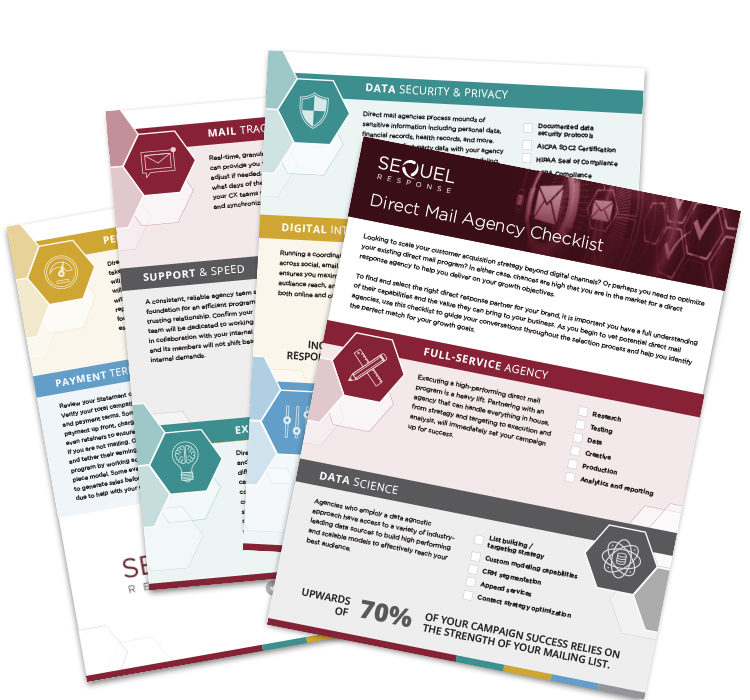Direct Mail Mistakes Insurance Marketers Make: Q&A with SeQuel’s Senior Marketing Strategist, Preston Carroll

Direct mail remains a potent customer acquisition tool for insurance marketers. Yet, many fail to properly optimize or expand their existing programs, often due to recurring mistakes. We sat down with SeQuel’s Senior Marketing Strategist, Preston Carroll, to answer your questions about the most common direct mail mistakes insurance marketers make and how to navigate these pitfalls.
For insurance marketers looking to maximize budgets, how can they avoid wasted spend in a direct mail campaign?
Carroll: To make every dollar count in the insurance industry, you need a sharp, data-driven strategy. Start by setting clear key performance indicators (KPIs) that matter to your brand. These might include:
- Lead generation: The number of quote requests or inquiries
- Website traffic: How many people visit your website after seeing your ad
- Conversion rates: The percentage of site visitors who convert into customers
Marketing analytics influence just over half (53%) of marketing decisions. Without tracking these metrics, you’re flying blind.
Next, focus your budget on what delivers. Analyzing ROI data will tell you which channels are worth your investment. Maybe social media ads pull in younger drivers for automotive insurance, or direct mail resonates with homeowners in flood-prone areas. Whatever the case, double down on high-performing channels, cut what’s not working, and always test.
Data tells you who to target, but creative makes your message stick. If you’re targeting a young family buying a fixer-upper, use insights to create personalized ads highlighting home insurance for older houses. Pair that precision with a compelling story or visuals that evoke trust and security.
What are common mistakes insurance marketers make that cause integrated direct response campaigns to fall short?
Carroll: A direct mail piece offering a free quote might pique interest, but if your landing page is slow, not mobile-friendly, or doesn’t pre-fill basic customer information, the process can feel disjointed. Our research aligns with this, as 100% of surveyed insurance marketers revealed that aligning their landing page design with their mail design results in more conversions. Insurance customers expect convenience, and anything complicating their journey can lead to drop-offs.
What’s your advice for insurance marketers who feel like their current agency might be holding them back?
Carroll: The insurance services industry is fiercely competitive, as there are nearly 4,000 property, casualty, and direct insurance companies in the United States alone. One of the most significant direct mail mistakes insurance marketers make is settling for stagnant performance, or a complacent partner.
If your current agency isn’t yielding impressive results, start by questioning their expertise in insurance-specific challenges. Do they have experience handling compliance, security, and industry-related concerns? How do they verify what is working and what is not—and then how do they use that information to increase future campaign results?
Additionally, evaluate their ability to drive measurable return on investment (ROI). A strong agency should excel in targeting ideal policyholders, re-engaging lapsed customers, and integrating direct mail with digital campaigns to maximize growth. If these are missing, it’s time to seek a partner that understands the sector’s complexities and can drive growth.
————
Explore our case studies to discover how insurance agents can exceed expectations with targeted direct mail strategies, and if you’re ready to turn setbacks into stepping stones for stronger, smarter campaigns, contact a SeQuel strategist today.

